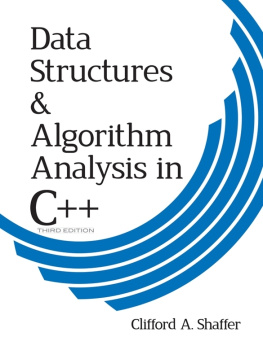Hemant Jain - Problem Solving in Data Structures & Algorithms Using C++: Interview preparation guide
Here you can read online Hemant Jain - Problem Solving in Data Structures & Algorithms Using C++: Interview preparation guide full text of the book (entire story) in english for free. Download pdf and epub, get meaning, cover and reviews about this ebook. year: 2017, genre: Computer. Description of the work, (preface) as well as reviews are available. Best literature library LitArk.com created for fans of good reading and offers a wide selection of genres:
Romance novel
Science fiction
Adventure
Detective
Science
History
Home and family
Prose
Art
Politics
Computer
Non-fiction
Religion
Business
Children
Humor
Choose a favorite category and find really read worthwhile books. Enjoy immersion in the world of imagination, feel the emotions of the characters or learn something new for yourself, make an fascinating discovery.
- Book:Problem Solving in Data Structures & Algorithms Using C++: Interview preparation guide
- Author:
- Genre:
- Year:2017
- Rating:4 / 5
- Favourites:Add to favourites
- Your mark:
Problem Solving in Data Structures & Algorithms Using C++: Interview preparation guide: summary, description and annotation
We offer to read an annotation, description, summary or preface (depends on what the author of the book "Problem Solving in Data Structures & Algorithms Using C++: Interview preparation guide" wrote himself). If you haven't found the necessary information about the book — write in the comments, we will try to find it.
Designing an efficient algorithm to solve a computer science problem is a skill of Computer programmer. This is the skill which tech companies like Google, Amazon, Microsoft, Adobe and many others are looking for in an interview.
This book assumes that you are a C++ language developer. You are not an expert in C++ language, but you are well familiar with concepts of references, functions, arrays and recursion. In the start of this book, we will be revising the C++ language fundamentals that will be used throughout this book. We will be looking into some of the problems in arrays and recursion too.
Then in the coming chapter, we will be looking into complexity analysis. Then will look into the various data structures and their algorithms. We will be looking into a linked list, stack, queue, trees, heap, hash table and graphs. We will be looking into sorting, searching techniques.
Then we will be looking into algorithm analysis, we will be looking into brute force algorithms, greedy algorithms, divide and conquer algorithms, dynamic programming, reduction, and backtracking.
In the end, we will be looking into the system design that will give a systematic approach for solving the design problems in an Interview.
Hemant Jain: author's other books
Who wrote Problem Solving in Data Structures & Algorithms Using C++: Interview preparation guide? Find out the surname, the name of the author of the book and a list of all author's works by series.













